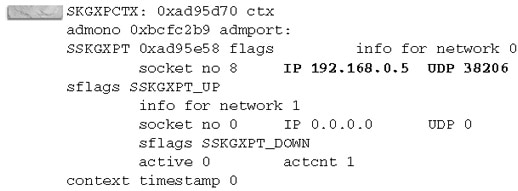When a process requires one or more blocks, Oracle first checks whether it has those (blocks) in its local cache. The simple hashing algorithm based on the DBA (Data Block Address) is used to traverse the cache buffers chains, and a suitable lock is found if it is in the hash bucket. When a session requests a block(s) that was not found in its local cache, it will request that the resource master grant shared access to those blocks. If the blocks are in the remote cache, then the blocks are transferred using the interconnect to the local cache. The time waited to get the blocks from the remote cache is accounted in the global cache cr request wait event.
NOTE
This event is known as gc cr request in Oracle Database 10g. The ‘global cache’ is changed to just ‘gc’.
The time it takes to get the buffer from remote instance to local instance depends on whether the buffer is in shared or exclusive mode. If the buffer is in shared mode, the remote instance will clone buffer in its buffer cache and ship it to the local cache. Based on the fairness value on that buffer, the lock downgrade may also happen if the number of CR blocks exceeds the _FAIRNESS_THRESHOLD counter value. If the buffer is in exclusive mode (XCUR), the PI has to be built and shipped across the buffer cache. The statistics are incremented according to whether the CUR block or the CR block is shipped.
Typically, global cache cr request waits are followed by the db file sequential/scattered read waits. During the sequential scan a few blocks may be in the remote buffer cache and the rest of the blocks may be on the disks.
Normally, the requesting process will wait up to 100cs and then retry reading the same block either from the disk, or it will wait for the buffer from the remote cache, depending on the status of the lock. Excessive waits for global cache cr request may be an indication of a slow interconnect. The private interconnect (the high speed interconnect) should be used for cache transfer between instances, and the public networks should be used for client server traffic. In some cases, the RAC may not pick the interconnect, and the Cache Fusion traffic may be routed through the public network. In this case you will see a huge number of waits for global cache cr request. You can use the oradebug ipc command to verify if the private network is used for cache transfer between instances.
Finding the Interconnect Used for Cache Transfer
The following procedure can be used to find the interconnect used for Cache Fusion:

The trace file will contain the details of the IPC information along with the interconnect details:

From the preceding trace file, you know the private network 192.168.0.5 is used for the Cache Fusion traffic and that the protocol used is UDP.
NOTE
For some reason, if the right interconnect is not used by the Oracle kernel, the CLUSTER_INTERCONNECTS parameter can be used to specify the interconnect for cache fusion. However, this limits the failover capability during interconnect failures.
Most of the hardware/OS vendors use proprietary high-speed protocols for the private network. The following table gives the short description of the network protocols used in different hardware/OS platforms. Other than the listed cluster servers, Veritas Cluster uses its own protocol (Low Latency Protocol) for the Cache Fusion traffic and cluster-wide traffic.

TABLE 1.RAC Network Protocols
Leave a Reply